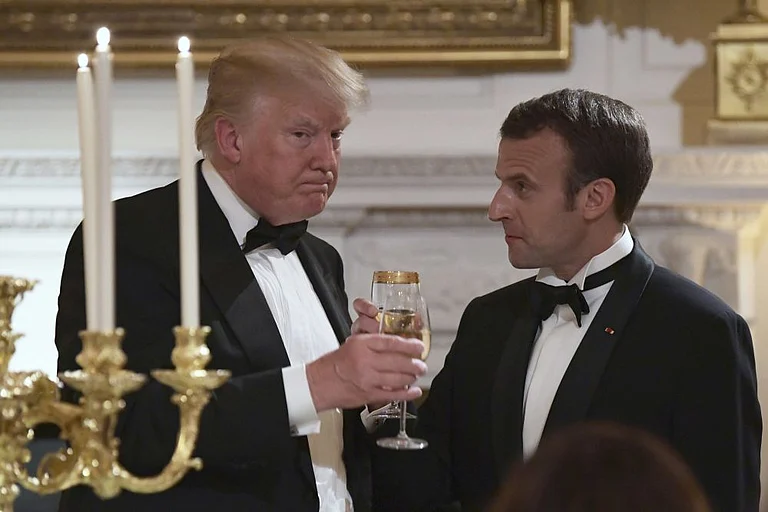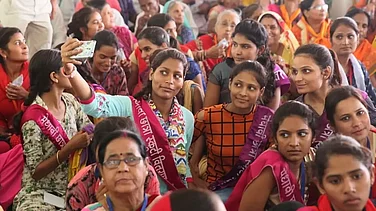It is fair to say that languages form the bedrock of society. Cultures, social structures, political movements flow from languages and find their voice and essence through the spoken or written word. But while all languages are equal, to paraphrase George Orwell, some are more equal than others. As India celebrates Hindi Diwas to commemorate the importance and contribution of Hindi to the nation’s ethos and identity, the day is also a reminder of the historic compromise between the framers of the nation’s constitution to decide on which languages will be more equal than others.
It was on September 14, 1949, when the famous Munshi-Ayyangar formula was finalised after three years of intense debate between those vouching for Hindi being made the sole “national language” and those who were opposed to it, especially delegates from south Indian states who wanted English to be part of the Constitution.
As per the compromise, Hindi became the "official language" of the federal government of India while English was to continue as an associate official language for 15 years to allow Hindi to develop a formal lexicon. The rules came into effect on Republic Day, 1950 and 15 years later, the Indian government decided to continue using English as the “de facto formal language of India”.
While the push for Hindi can mean changing a colonial mindset, as is the Narendra Modi government’s motto while changing names of cities and streets such as the recent Rajpath which became Kartavyapath, the issue of inequality of language keeps returning like Banquo’s ghost to haunt Indian politics.
Union Home Minister Amit Shah’s comments earlier this year on the government deciding to make Hindi the medium of running the government at the 37th meeting of the Parliamentary Official Language Committee in New Delhi met with harsh criticism, especially from the South. Shah said Hindi should be accepted as an alternative to English and not to local languages. Opposition leaders called it “Hindi Imperialism”.
In April, Bollywood jumped into the debate with actor Ajay Devgan and multilingual film actor Kichcha Sudeep engaging in heated Twitter exchanges on linguistics.
More recently this week, former Karnataka chief minister H D Kumaraswamy wrote to CM Basavaraj Bommai on how providing preferential treatment to one language is an insult and tantamount to injustice to the state. Congress leader Siddaramaiya called "imposing Hindi is a sign of coercive federalism rather than cooperative federalism".
“The country comprises thousands of languages and sub-languages and it is a great federation of 560 provinces with different social and cultural ethos agreeing to come together. Providing preferential treatment to one language is nothing but insulting the land. [Enforcing] Central government sponsored Hindi Diwas forcefully in Karnataka will be a betrayal to Kannadigas by the ruling BJP,” Kumaraswamy said.
Given the role language movements play in the building of national and political identity, such debates about Hindi vis-a-vis other languages and its place in the nation ebbs and flows with the political mood of the country. But a day to commemorate Hindi gives us the chance to look at the language’s journey that often remains hidden in plain sight.
Hindi literature, once a vehicle for anti-imperial and socially reformist discourse, has deteriorated due to market pressures and political red tape and works of Hindi literature are loath to find apt translations. It's not that there is any dearth of good Hindi literature and the recent Booker award for a Hindi translation proves the universality of the themes that Hindi writers are engaging in. But Hindi continues to be snubbed by the world of literary translations, vital for any language's global appeal. In a previous column for Outlook, Satyanand Nirupam wrote, “Many gifted writers of Hindi have readily translated literature of other languages into Hindi…But few languages are doing a similar task to Hindi".
The world of Hindi writers and publishers is also vulnerable to the undercurrents of growing saffronised politics that pin Hindi as the torchbearer of a new national awakening. Ironically, Hindi writers and publishers are faced with the challenge of adapting to an increasingly globalised audience and the digital boom which has pushed the traditional ecosystem that sustained Hindi pulp fiction and literary criticism for decades to the edge. Any revival of the Hindi language must first include a revival of an industry that can ensure not only livelihood and freedom for writers and scholars of Hindi but also ensure their works reach wider audiences.
On Hindi Diwas, let us also look at how languages can be tools for self-assertion and resistance. The language movement in Tamil Nadu, writes Aazhi Senthilnathan, “may be divided into three distinct phases. The pre-Independence phase was propelled by the self-respect movement; the 1960s phase was driven by hopes for self-rule; and the third phase, today, is marked by a new generation of self-assertive minds.” West Bengal too has had its own linguistic movements. Bengali language activist Garga Chatterjee recently said that “With Hindi being pushed by the Centre as Rashtra Bhasha, the spectre of language imperialism haunts the Indian Union”.
Linguistic diversity flows through the country, where less than half speak Hindi and while the other (dominant) half think and express in a mix of languages, cultures, and customs that change every few kilometers. The northeast, for instance, is home to over 200 languages belonging to no fewer than five language families of Indo-Aryan, Tibeto-Burman, Austro-Asiatic, Tai-Kadai and Dravidian language groups. Over 80 languages are already facing the threat a region and many languages have been classified ‘dying’ or ‘dead’. Critics have blamed the Union government policy adopted in 1971-72 that decided to exclude mother tongues spoken by less than 10,000 people from the Census report for majorly contributing to the invisibalisation of thousands of regional languages. While promoting regional languages and dialects has received a push under the Modi government in some states, much of the chunk of expenditure goes to languages like Sanksrit. The government has spent Rs. 643.84 crore on the promotion of Sanskrit in the three years of 2017-18, 2018-19 and 2019-20.
As we celebrate Hindi Diwas, let us also celebrate the essence of preservation and diversity. Let us look back to the past for lessons while we try not to forget the languages that do not get their own dates on the national calendar. As language researcher and Assam-based linguist Palash Kumar Nath had told Outlook, “When a language dies, stories, songs, traditions, and knowledge die along with it. When you keep a language alive, you keep the identity, culture and tradition of a group of people alive”.


























